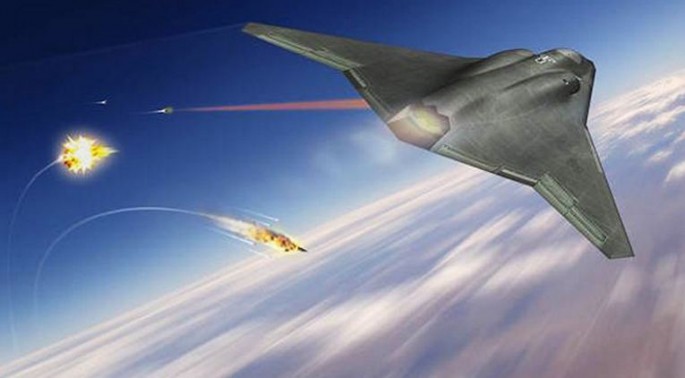Concepts for the American's sixth generation fighter jet that should service in the 2030s emphasize attributes dedicated to operating within and defeating the anti-access/area denial (A2/AD) strategies favored by both Russia and China.
The concepts, however, agree on one point: this next gen fighter or fighters for the U.S. Air Force and the U.S. Navy will be armed with solid state airborne lasers in turrets rotating a full 360 degrees that can shoot down enemy drones, manned aircraft such as fighters and incoming missiles.
One offshoot of the shift to lasers will likely be the end of the small, incredibly fast and highly maneuverable fighters that epitomize aerial combat. No sixth gen jet, no matter how fast or highly maneuverable, can dodge multiple laser beams striking it almost simultaneously at the speed of light.
Once detected by a laser armed U.S. fighter, an enemy fighter stands a good chance of being shot down no matter how desperately it to evade destruction with mind-numbing turns and other high-g maneuvers.
The only way to survive will be evading initial detection; staying outside the range of the U.S. laser jet and confusing the sensors a laser relies on the detect and lock onto a target long enough for the intense laser beam to take lethal effect.
In April 2015, the Center for Strategic and Budgetary Assessments (CSBA) released a report concluding the next-generation Air Force fighter should be larger and bear more resemblance to a bomber rather than a small, maneuverable traditional fighter.
It analyzed over 1,450 air-to-air combats since 1965 and found long-range weapons and sensors dramatically decreased instances of dogfighting.
With the increase of air defense systems using electronic and infrared sensors and high-speed weapons, traditional designs relying on small size, high speed, and maneuverability might be less relevant and easier to intercept. The solution is a larger fighter than can be packed with the offensive and defensive systems it needs to win and survive.
This fighter will be much larger than an F-22 or F-35, and will rely on enhanced sensors, signature control, networked situational awareness and very-long-range weapons such as lasers to detroy opposing aircraft before being detected.
Larger planes will also have greater range, allowing them to be stationed further from a combat zone, have greater radar and IR detection capabilities, and carry bigger and longer-range missiles.
There's also the possibility that if US laser jets are going to be big and not too maneuverable, there's no need for this aircraft to be manned.



























